Our Blog - Lannamezan, France
One of the larger towns we visited during the trip was Lannamezan, whose inhabitants are called the Lannemezanais (please don't ask me to pronounce that). It is large enough that it has a shuttle two times a week with 3 different routes. The fortified city founded in 1274 and it didn't have an interesting history prior to World War II other than its' last lord, Marc II Bertand François de Lassus, condemned to death by the revolutionary tribunal in Paris, was guillotined in 1794. During World War II, under the Vichy regime, nomads (including gypsies) were rounded up from the area and put into a camp in Lannemezan. They remained there from April 1941 until 1946. After peeking at a population over 8,600 people, it is now down to under 6,000.
This is the Hotel de Ville, although I really couldn't find any information on the history of the building.

The Saint-Jean-Baptiste Church is a 12th century Gothic church with the original 12th century main portal, a 15th century apse, a 19th Romanesque nave and an unfinished bell tower, also from the 19th century. The church was built at the end of the 12th century but it was burned down in 1569 when Huguenot troops devastated the village and burned down the church. It was rebuilt in the 18th century (after the Revolution) but then the bell tower was demolished in 1851 and rebuilt. It looks quite odd for a church ... the main portal dating from the 12th century (gothic point, large stones) but then the rest of the church is quite plain and the bell tower, from the 19th century, remaining unfinished with what would seem to be the roof of a house.
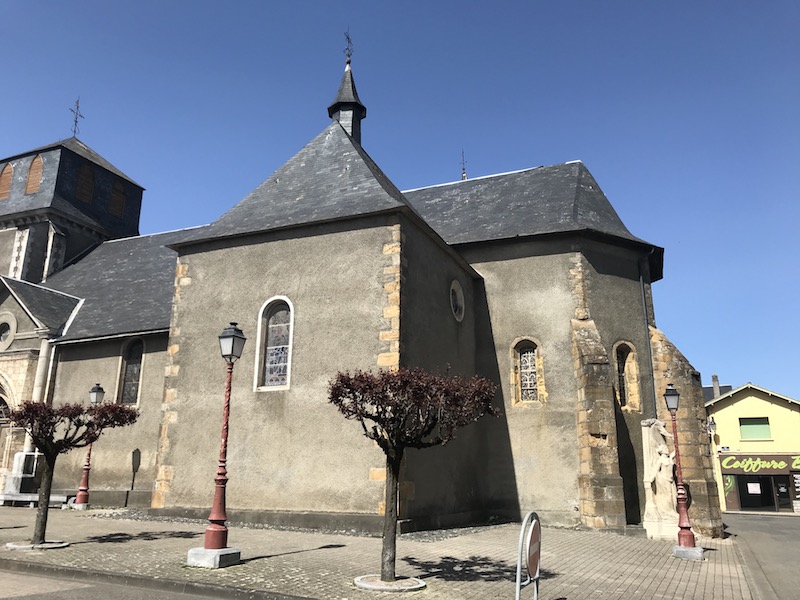
The 12th century gate has a vegetal frieze adorning the upper part of the portal, made up of leafy vines, birds, animals and human figures.

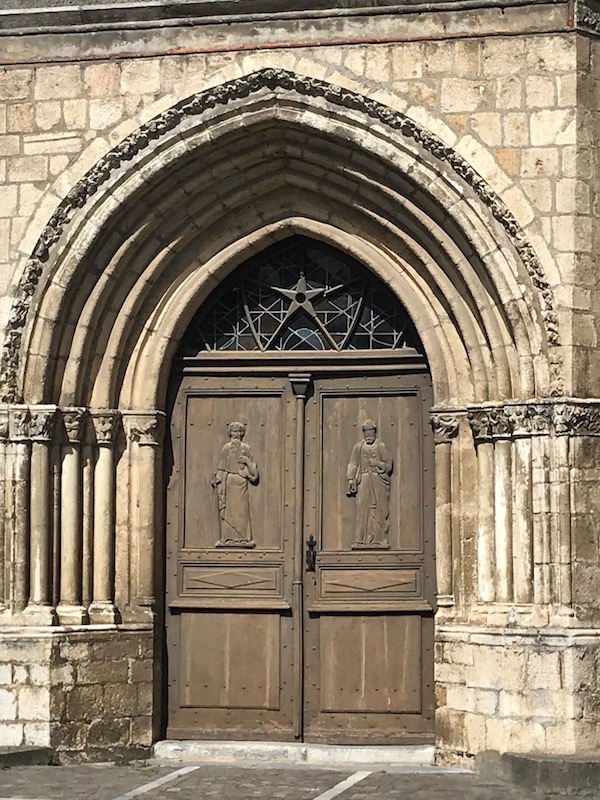


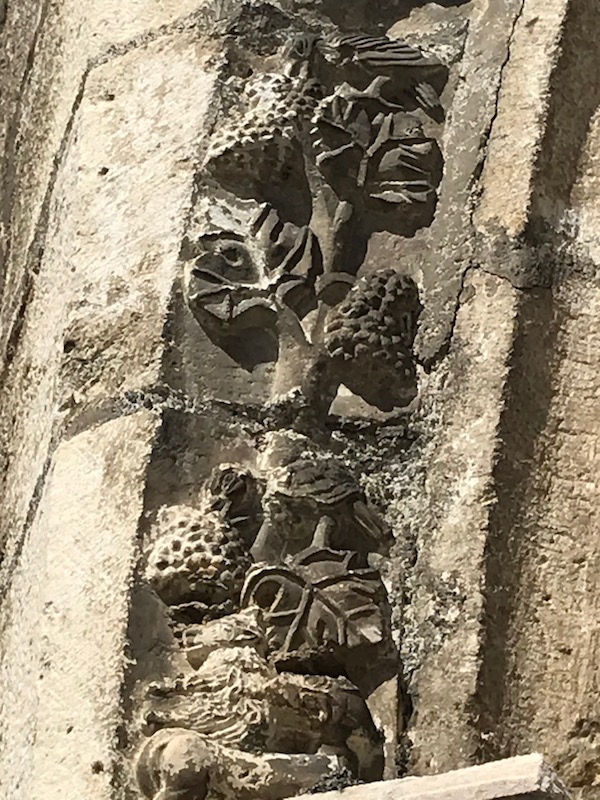
I wanted to get a close-up of the carved door.

On the interior, you can see the Romanesque style clearly.


The main altarpiece was created in 1703 and is dedicated to Saint John the Baptist. You an see the Gothic ribbed arches here, one of the only places inside the church that retained any of its Gothic character.

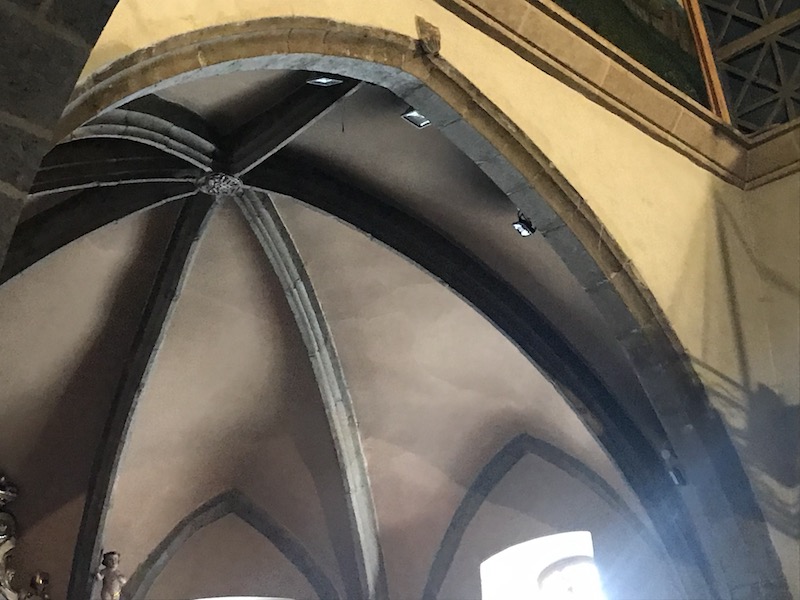
The two most interesting chapels for me where Chapel of the Virgin Mary and Saint Peter's Chapel. I'll start with the Chapel of the Virgin Mary. It was created in 1772 and the altar is carved good with gilded ornaments and paintings imitating marble. The columns around the Madonna and Child are decorated with vine leaves and bunches of grapes with Corinthian capitals on the top of the columns. On the sides are identical decorations that represent (from the bottom) the rosary, the crown of 12 stars (from the iconographic theme of the Immaculate Conception), branches of roses with roses, two swords representing Our Lady of Sorrows, and a crown symbolizing the title of Queen of Heaven.
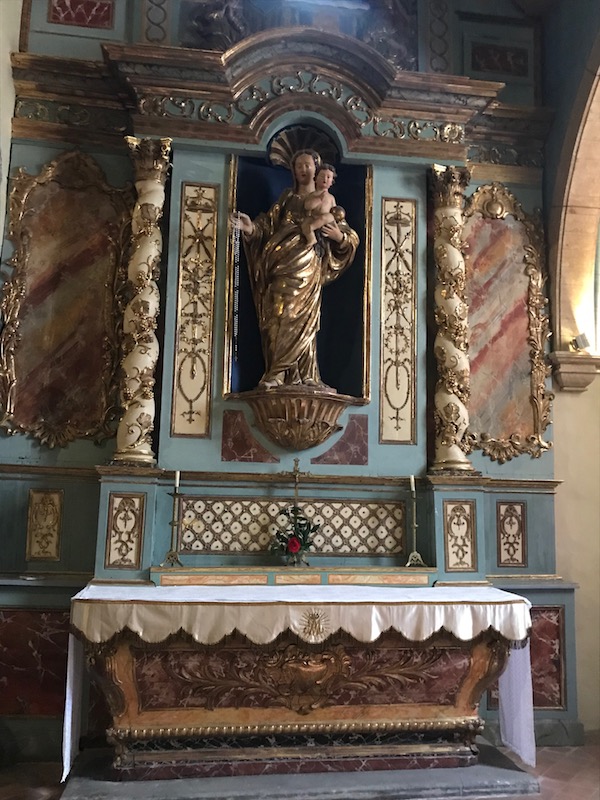


On the other side of the main altar is Saint Peter's Chapel, which looks very similar in style (I think it is Baroque). Also done in 1772 by the same workshop, the altar is also gilded wood painted to look like marble. The left and right sides of the altarpiece are also identically decorated, representing fish, two laurel branches, the keys of Saint Peter, a papal tiara, and angels.

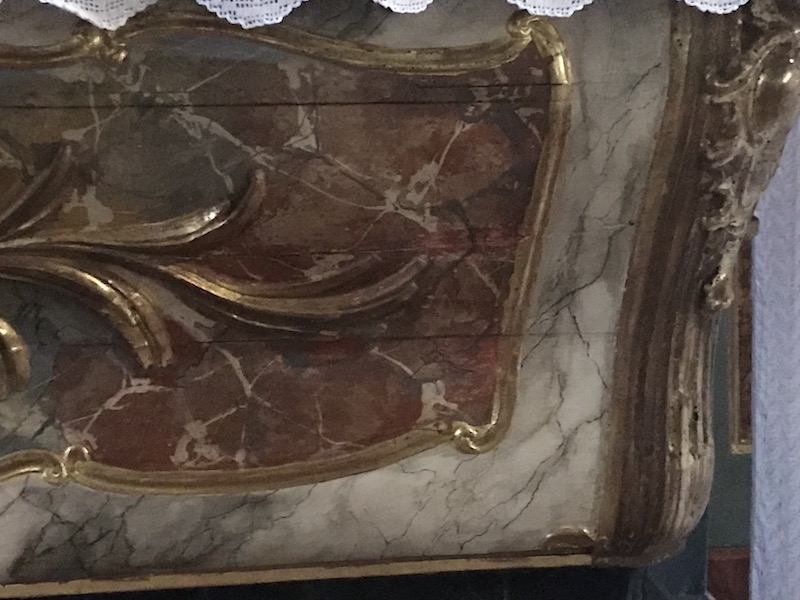
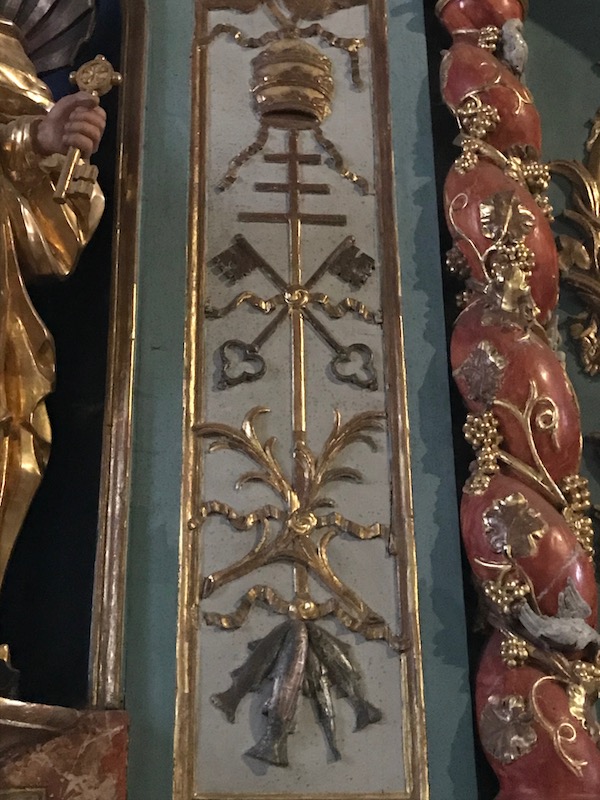
Just one stained glass window, this one of Saint Joseph that was created in 1868 by a glass maker in Toulouse.

The war memorial of 1914-1918 is outside of the church and represents the allegory of Victory.

